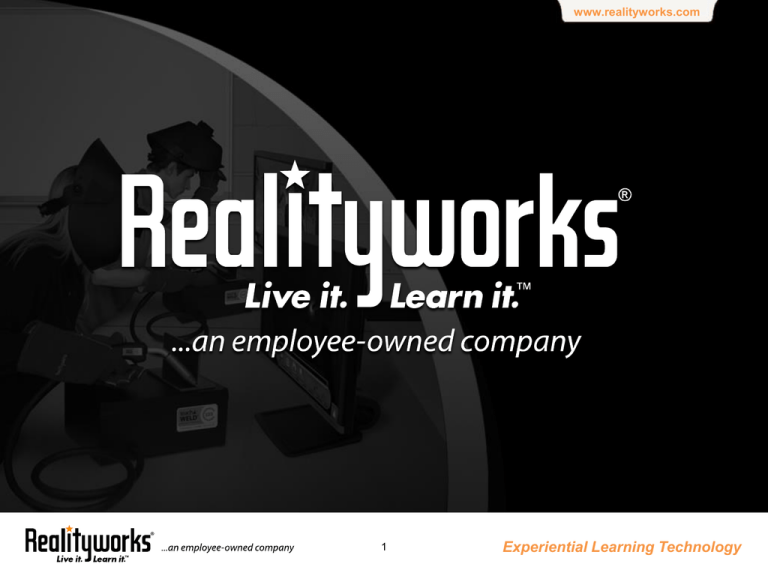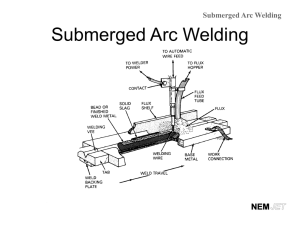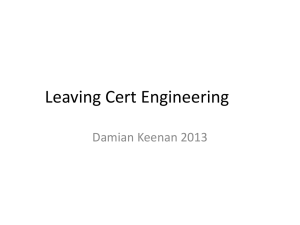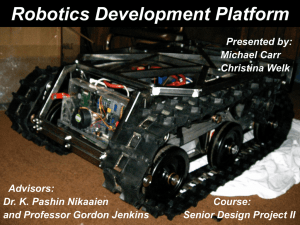teachWELD product overview
advertisement

www.realityworks.com 1 Experiential Learning Technology www.realityworks.com SIIA CODiE Award 2014 teachWELD Welding Simulator Overview 2 Experiential Learning Technology www.realityworks.com A little about Realityworks • DISTRIBUTION INTO EDUCATION 62% of school districts in the U.S. 90 countries worldwide 31,000 institutions 6,000,000 students served through the use of our products • EDUCATIONAL FOCUS Hardware, software, & curriculum development 3 Experiential Learning Technology www.realityworks.com Today's educational welding lab • 8 – welding booths per school on average • 22 – average number of students/class • 33% – students with cognitive disabilities Classroom management is an issue Instructors are trained as CTE educators, not always in the specific disciplines (like welding) There may be little to no instructional materials available 4 Experiential Learning Technology www.realityworks.com teachWELD design for education • Minimized cost to enable multiple machines in each classroom • A classroom management system to aid instructors • Scaffold exercises enable self-paced learning 5 Experiential Learning Technology www.realityworks.com Press Release introducing teachWELD 6 Experiential Learning Technology www.realityworks.com Curriculum Unit 1: Unit 2: Unit 3: Lesson 1: Intro to Welding Lesson 1: Welding Equipment Lesson 1: Intro to Welding Simulation – – Careers/benefits Types of welds and applications Lesson 2: Types of Welding – – Main types of welding process Benefits/limits of each process Lesson 3: Welding Safety – – Personal Protective Equipment Quiz of PPE Lesson 4: Welding Safety – Safety focus (arc, electric shock, flammable materials) Lesson 5: Welding Safety – Safety focus (arc, electric shock, flammable materials) Lesson 6: Safety Review/Assessment/Certification – – – – Types of welders Parts of welders – – Lesson 2: Welding Equipment – – Parts of welders (pt.2) Set-up/maintenance Lesson 3: Weld Defects – – – – Types of defects Causes of defects Repair Prevention of defects Lesson 4: Welding Basics – – Five basics Welding joints – – Lesson 2: Welding Sim. Training / Diagnostic Report – – – Reading a diagnostic report Understanding five basics Welding basics Lesson 3: Welding Simulation Review / Assessment – Lesson 5: Welding Joint Design How it works What each part does – Coupons – Welding Gloves/Hat – Welding Gun – Software Assessment on reading diagnostic report Positions Welding basics assessment Review materials Safety test 7 Experiential Learning Technology www.realityworks.com Better, Faster, Engaged Learning • Game-like interface engages students in a way they are accustomed to • Immediate feedback on skills and weld quality • Repetitive play improves muscle memory learning • Excellent distance learning aid: Students can practice remotely and come in for physical assessments periodically 8 Experiential Learning Technology www.realityworks.com Exercises with Assessments • 450 practice exercises allow for self-paced exploration • Printed assessments provide immediate feedback and diagnostics • Excellent cognitive learning tool • Opportunity to require mastery before releasing students to the shop floor 9 Experiential Learning Technology www.realityworks.com Welding Diagnostics: Cognitive Learning Tool • Student assessment teaches the interdependent relationships of: – – – – – – – – – Heat input Motion straightness Work angle Travel angle Nozzle-plate distance Welding speed Voltage Weld size Root penetration • Assessments saved for teacher review 10 Experiential Learning Technology www.realityworks.com Goals of Welding Simulation • Create qualified welders in less time • Be more effective in creating welders – increase the number of persons able to achieve passable welds • Reduce the cost of consumables 11 Experiential Learning Technology www.realityworks.com But does it work? • Study: “Virtual Reality Integrated Weld Training” • Iowa State University • Dept. of Industrial and Manufacturing Systems Engineering • by Richard Stone, Ph.D. 12 Experiential Learning Technology www.realityworks.com Simulators create more welders in less time 25% increase in qualified participants 25% Less Time 1. Stone, R., Watts, K., Zhong, P., & Wei, C. (2011). Physical and cognitive effects of virtual reality integrated training. Human Factors, 53(5), 558-587. Retrieved from http://connection.ebscohost.com/c/articles/66816988/physical cognitive-effects-virtual-reality integrated-training 13 Experiential Learning Technology www.realityworks.com Simulators create more welders in less time 65% increase in qualified participants 20% Less Time 1. Stone, R., Watts, K., Zhong, P., & Wei, C. (2011). Physical and cognitive effects of virtual reality integrated training. Human Factors, 53(5), 558-587. Retrieved from http://connection.ebscohost.com/c/articles/66816988/physical cognitive-effects-virtual-reality integrated-training 14 Experiential Learning Technology www.realityworks.com …And with less cost “teachWELD has decreased our consumable and welding costs by about for our program.” 70% George Karr, Welding and Technology Instructor, Hollenstein Career &Technology Center, Fort Worth, TX 15 Experiential Learning Technology www.realityworks.com Goals of RealCareer Welding Solutions • Creates qualified welders in less time • More effective in creating welders – increase the number of persons able to achieve passable welds • Reduces the cost of consumables 16 Experiential Learning Technology www.realityworks.com $4,900.00/workstation 17 Experiential Learning Technology www.realityworks.com 18 Experiential Learning Technology










